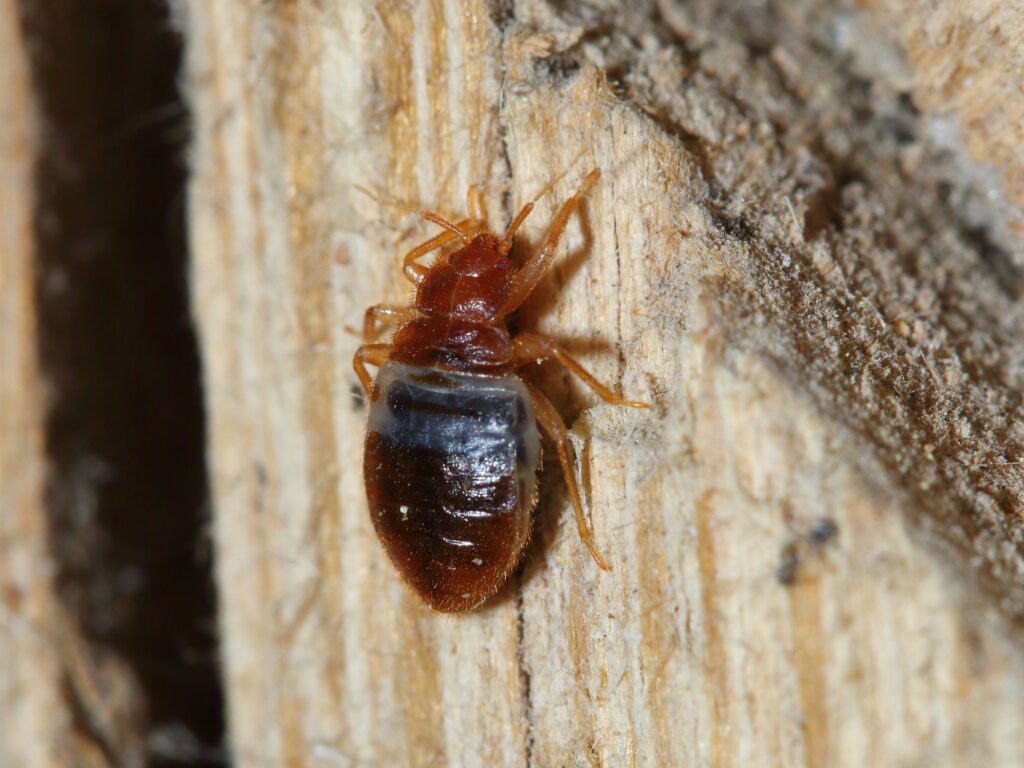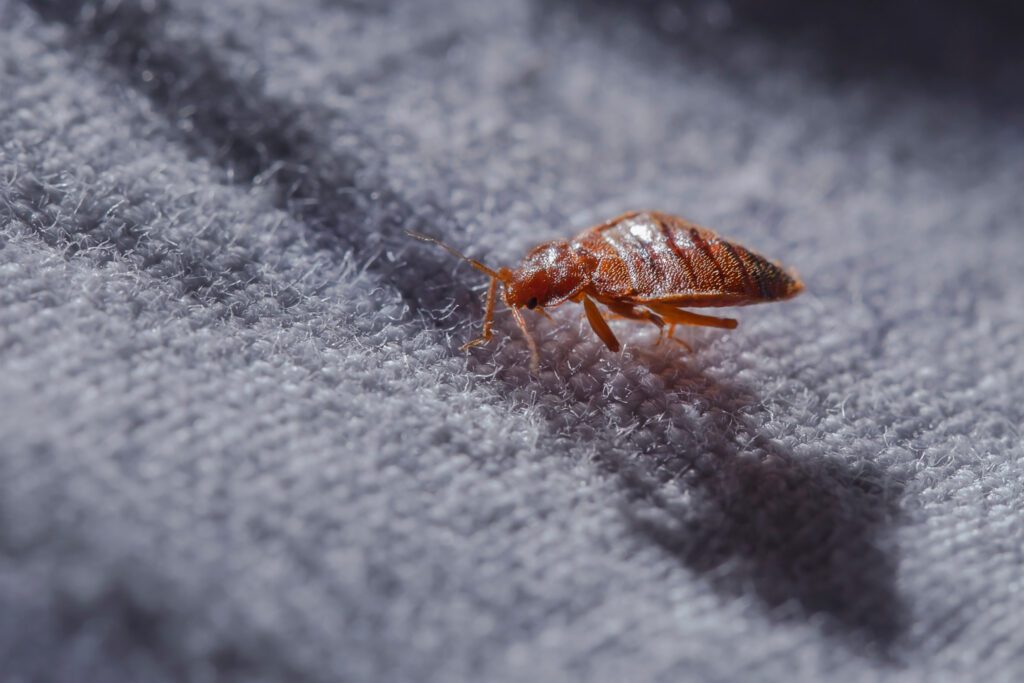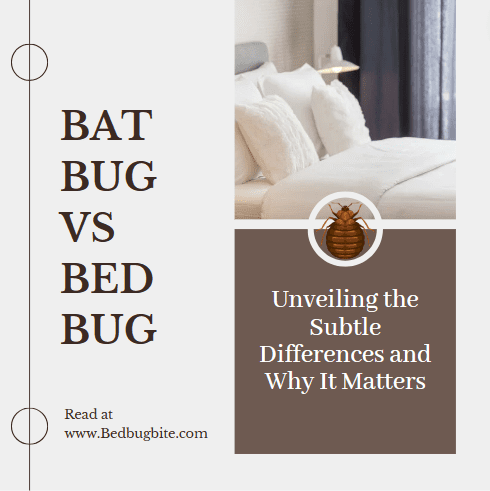Understanding the nuanced differences of Bat Bug vs Bed Bug is not just an exercise in entomology; it’s crucial for effective pest control. Many people mistakenly lump these two pests into the same category, often leading to ineffective treatments and continued infestations. This post aims to dispel these common myths and equip you with the knowledge you need to accurately identify and effectively deal with either of these unwelcome guests. Our objective is clear: provide you with the essential information to understand these creatures in depth, diagnose your specific problem accurately, and implement the most effective treatment plan. Let’s begin by laying the groundwork and delving into the essential characteristics of bat bugs and bed bugs.
According to the University of Kentucky’s College of Agriculture, Food and Environment, the adult bat bug closely resembles the adult bed bug, making it imperative to correctly identify which one you’re dealing with for effective treatment. We’ll discuss their unique features, habitats, and health risks, among other important aspects, as we unravel this complicated issue.
By reading this comprehensive guide, you’ll empower yourself to take informed actions, whether you opt for DIY methods or professional interventions. We offer a complete, authoritative, and reader-friendly discussion that is unparalleled in depth and utility. So let’s dispel the confusion and take control of the situation at hand.
This introduction sets the stage for a multi-faceted exploration that’s backed by research and years of hands-on experience. We know how stressful dealing with any form of infestation can be, and we’re here to guide you every step of the way. Stay tuned as we break down the differences and delve into effective strategies for identification, treatment, and prevention of both bat bugs and bed bugs.
Basic Overview: Bat Bug vs Bed Bug
As we venture into this crucial discussion, let’s begin by understanding the core characteristics of our subjects: bat bugs and bed bugs. At first glance, both pests look astonishingly similar—small, brown, and flat-bodied. This deceptive resemblance is what often leads to mistaken identity. However, these bugs inhabit different environments and carry distinct implications for homeowners.
Definitions: What are Bat Bugs? What are Bed Bugs?
Bat bugs and bed bugs are both members of the Cimicidae family, but they are different species. Bed bugs, scientifically known as Cimex lectularius, are parasites that feed primarily on human blood and can be found lurking in beds, sofas, and other furniture. Bat bugs, on the other hand, are scientifically termed as Cimex pilosellus and predominantly feed on bat blood. While bed bugs prefer human habitats, bat bugs are often found in places where bats reside, such as attics or abandoned buildings.
Natural Habitats for Both
The habitats these bugs prefer are also distinct. Bed bugs are urban dwellers that are more commonly found in human-made environments, such as hotels, homes, and public transportation. Bat bugs, in contrast, tend to reside in more natural settings, like caves, where their primary hosts—bats—are present. However, they can migrate into homes when bats decide to inhabit human-made structures.
Similarities in Appearance and Behavior
The striking similarity between the two species can be baffling. Both are wingless, flat-bodied, and grow up to 4-5 mm in length. Additionally, they can both survive for long periods without a blood meal, making them particularly resilient. According to a publication from Penn State’s Department of Entomology, their physical likeness can make identification extremely challenging without professional help, as special microscopic examination may be needed to differentiate between the two.
In this section, we’ve laid the foundation for understanding the basic characteristics that define bat bugs and bed bugs. Keep reading as we delve into more complex facets of these pests, such as their feeding habits and the health risks they pose. By arming yourself with this crucial knowledge, you’ll be better equipped to identify and deal with your specific infestation effectively.
How They Bite
As you delve further into the intricacies of dealing with these invasive pests. You’ll find that their feeding habits are another defining criterion that sets them apart. Understanding their unique behaviors when it comes to sourcing a blood meal will not only help you identify the type of bug you’re dealing with but also guide you in seeking the most effective treatment options.
The Feeding Habits of Bat Bugs

Bat bugs primarily seek out bats as their source of nourishment. Feeding on their blood usually when the bats are at rest. Interestingly, bat bugs are opportunistic and can resort to biting humans when their primary hosts are not available. Especially if bats migrate or are removed from the habitat. It’s important to note that bat bugs feeding on humans is often a sign of a bigger issue. Namely, the presence of bats in close proximity to human dwellings.
The Feeding Habits of Bed Bugs
In contrast, bed bugs are human parasites by nature. Their feeding habits are more indiscriminate, meaning they’ll bite any exposed skin.Ooften during the night when their hosts are sleeping. Bed bugs can sustain themselves by feeding as infrequently as once every few days or as often as several times a night. Depending on factors like temperature and the availability of a host. Unlike bat bugs, bed bugs have adapted to live in closer association with humans, and their feeding habits reflect this relationship.
Comparison of Their Bites and the After-Effects
The aftermath of a bite from either pest can be quite similar—itchy, red welts that cause discomfort. However, the patterns may vary. Bed bug bites often appear in a linear arrangement, while bat bug bites don’t show any particular pattern. Another point of distinction lies in the frequency and timing of the bites. Bed bugs are habitual feeders that will return to the host repeatedly, whereas bat bugs are less likely to bite humans regularly.

Research from the Illinois Department of Public Health underscores that although bat bugs and bed bugs are closely related. Their bites may require different treatment approaches due to the dissimilarities in their feeding habits.
Armed with this detailed information on how bat bugs and bed bugs feed. You’re now one step closer to diagnosing and resolving your pest dilemma effectively. The next section will guide you through the morphological differences, further aiding your quest for an infestation-free life.
Morphological Differences
Correctly identifying whether you’re dealing with bat bugs or bed bugs is the cornerstone of implementing an effective treatment plan. It’s easy to confuse the two based on superficial traits, but there are subtle morphological differences that can offer vital clues. This section aims to provide you with a magnifying lens on these differences. Guiding you toward an accurate diagnosis and subsequent course of action. -Bat Bug vs Bed Bug
Visual Cues for Identification
At first glance, both bugs appear almost identical: small, flat, and brown. But upon closer inspection, you’ll notice nuanced differences. The fringes of the thorax on a bat bug are longer and more pronounced than those on a bed bug. Also, while both bugs are wingless, their antennae differ slightly in size and shape. With bat bugs having a more elongated third antennal segment compared to bed bugs.
Microscopic Features That Distinguish Them
For a more definitive identification, microscopic examination can be incredibly useful. Under a microscope, you’ll see that the hair length on the upper covering of the thorax of bat bugs exceeds the width of the eye, while it’s shorter on bed bugs. Although this might seem like a minute detail, it can be decisive in identifying the correct pest for treatment.
Equipment Needed for Accurate Identification
The sheer similarities between these two bugs often make professional identification essential. A good quality magnifying glass or a microscope will go a long way in helping you distinguish between the two species. However, because the differences can be so slight, enlisting the help of a trained entomologist or pest control expert is often the best course of action for definitive identification.
According to the University of Florida’s Entomology and Nematology Department. Even experts sometimes rely on specialized equipment to positively identify these creatures due to their close resemblance. This serves to underscore the importance of accurate identification, which is the linchpin for effective treatment. Bat Bug vs Bed Bug
By now, you should have a comprehensive understanding of the subtle yet crucial morphological differences between bat bugs and bed bugs. As we move forward, we’ll explore the health risks associated with these pests and how you can mitigate them, fully equipped with the right information.
Health Risks and Implications
If you’re struggling with an infestation of either bat bugs or bed bugs. Understanding the health risks associated with each is vital. While both pests can incite a sense of unease and discomfort, their health implications can differ considerably. This section aims to dissect the health concerns associated with these pests, guiding you in taking the right precautions to protect your well-being.
Health Risks of Bat Bug Bites
Though bat bugs prefer to feed on bats, they can turn to human hosts when their primary source is unavailable. Generally, bat bug bites are less of a concern for disease transmission compared to other insect bites like ticks or mosquitoes. However, their bites can lead to skin irritation and emotional distress. Plus, the presence of bat bugs can often indicate a larger issue. Bat infestation—which itself poses a series of health risks, including the potential for rabies transmission.
Health Risks of Bed Bug Bites
Bed bugs are more likely to be a concern in daily human life given their preference for human hosts. The bites themselves are generally not dangerous and do not transmit diseases, but they can result in allergic reactions. Secondary bacterial infections from scratching, and significant emotional distress, including anxiety and insomnia.
Psychological Toll of Infestations
Regardless of the species, having a bug infestation can take a significant psychological toll. The constant fear of being bitten, coupled with the stigma often associated with infestations, can lead to sleep deprivation, anxiety, and even depression. The emotional and psychological impact should not be underestimated, and professional help may be required to cope with these challenges.
Professional Guidance and Medical Advice
Given the different health implications, it’s crucial to consult healthcare professionals for appropriate treatment of bug bites. If you’re experiencing severe reactions or emotional distress, a consultation with a dermatologist or a mental health specialist is highly recommended.
In sum, it’s crucial to understand the specific health risks posed by bat bugs and bed bugs to manage their impact effectively. Your health and well-being are paramount, and knowing what you’re up against is the first step in mitigating risks. Stay tuned as we delve into effective treatment and prevention strategies for both pests in the upcoming sections. Bat Bug vs Bed Bug
Effective Treatment Strategies
Successfully eradicating either bat bugs or bed bugs hinges on adopting the correct treatment strategy, a choice that is fundamentally guided by accurate identification of the infesting species. In this crucial section, we’ll outline effective methods for managing and eliminating both types of bugs, thereby enabling you to reclaim your home and peace of mind.
Treatment for Bat Bugs
The first step in treating a bat bug infestation is to remove their primary host—bats—from your living spaces. Bat exclusion techniques, often carried out by wildlife removal experts, are essential for this. Once the bats are removed, targeted pesticide applications may be used to treat areas where bat bugs were living. It’s also important to seal off entry points to prevent bats from returning and causing a new infestation. Always remember that improper treatment can exacerbate the issue, so consult professionals for best results.
Treatment for Bed Bugs
For bed bugs, a more comprehensive approach is typically required due to their closer association with human living spaces. This often involves multiple treatment methods, including chemical treatments, heat treatments, and even cryogenic freezing of infested items. In addition, deep cleaning of all potential hiding spots and regular monitoring are critical steps. Bed bugs are known for their resilience, so repeated treatments are often necessary for complete eradication.
DIY vs. Professional Treatment
While do-it-yourself treatments can offer a temporary fix, the subtleties involved in effective pest control often necessitate professional involvement. Over-the-counter pesticides may not be effective and could even worsen the problem by scattering the bugs. Hence, consulting with professional exterminators is often the safest and most effective route for treatment.
Cost and Time Factors
The complexity and duration of the treatment can vary significantly between bat bugs and bed bugs, thereby influencing the cost. Bat bug treatment might involve additional costs related to bat removal, while bed bug treatments can be labor-intensive, requiring multiple visits from extermination services.
By understanding these treatment options and approaches, you can make an informed decision that not only solves your immediate problem but also helps in preventing future infestations. Up next, we’ll explore some preventive measures to help you maintain a bug-free environment.
Preventive Measures for Future Infestations
Having dealt with the immediate problem, it’s imperative to focus on prevention strategies that will protect you from future infestations of either bat bugs or bed bugs. A single encounter with these pests is more than enough to appreciate the importance of proactive prevention. In this vital section, we’ll discuss a range of measures you can implement to ensure that these pests don’t make an unwelcome return to your home.
Environmental Modifications
For bat bugs, the key preventive measure is to make your home inhospitable for bats. This involves sealing off entry points like chimneys, vents, and gaps in siding. Use of bat repellents and even ultrasonic devices can add an extra layer of protection. For bed bugs, reduce clutter in your home to minimize hiding spots, and routinely inspect and clean places where they’re likely to reside, such as beds, sofas, and luggage.
Regular Inspections
Regular inspection is the cornerstone of preventing infestations. In the case of bat bugs, regularly inspect attics and other secluded places for signs of bat activity. For bed bugs, make it a habit to check hotel rooms and second-hand furniture before bringing them into your home. An ounce of prevention is worth a pound of cure; catch the problem early, and you’ll save yourself a world of trouble later.
Chemical and Non-Chemical Approaches
The use of residual insecticides can be a helpful preventive measure, especially in high-risk areas like bedrooms for bed bugs and attics for bat bugs. However, always remember that chemical approaches should be integrated with non-chemical strategies like regular cleaning, use of mattress encasements, and frequent vacuuming for the most effective results.
By adopting these preventive measures, you’re not just solving a problem; you’re investing in long-term peace of mind. As we wrap up this comprehensive guide, we hope you are now better equipped to distinguish, treat, and prevent future infestations of bat bugs and bed bugs effectively.
Conclusion: Bat Bug vs Bed Bug
Embarking on the journey to eradicate bat bugs or bed bugs from your life can be overwhelming, but armed with the right knowledge, you can tackle this problem head-on and secure a more comfortable, bug-free environment. In this comprehensive guide, we have explored the distinctions between bat bugs and bed bugs, delved into their biology, analyzed the health risks, and laid out both treatment and preventive strategies. This multi-pronged approach is crucial for effective long-term control.
Consultation and Professional Help
If your bug problem persists or escalates, don’t hesitate to seek professional help. Expert exterminators and pest control services can offer tailored solutions that are both safe and effective. It’s always better to act sooner rather than later to prevent infestations from spiraling out of control.
Your journey doesn’t have to end here; continue to educate yourself and others, ensuring that you stay one step ahead of these invasive pests. Remember, knowledge is your best weapon in this battle, and we hope this guide has been instrumental in equipping you for success. Thank you for choosing “Bed Bug Bite” as your trusted resource. Stay tuned for more enlightening content and tips on maintaining a bug-free life.




